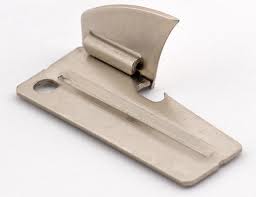A simple, functional utilitarian kit for backcountry ski repair. For snowshoeing, too.
For three-season backpacking, my repair kit is rather simple: Duct tape and dental floss.
As long as I can walk out, there is no real danger in terms of gear failure. A busted zipper on a shelter can be dealt with OK. A rip in my pack can be stitched or taped up until I can walk out in a day or two. Even a busted shoe can be dealt with for 80+ miles and lots of duct tape.
Seriously. At the Canadian border on the Pacific Crest Trail.
Winter in the backcountry? So much more can go wrong.
Climbing skins can fail. A binding can break. A three-pin boot sole can delaminate.
Post-holing through miles of snow back to the trailhead is not just an inconvenience, it can quite literally be a life-or-death moment.
All backcountry travel has some form of risk. But for winter, esp on skis or snowshoes, the risk can be high without proper planning. That means avoiding avalanche terrain, knowing when to respect the weather conditions and having the appropriate emergency repair kit.
A busted binding can be dealt with for a few miles if you have the proper equipment. Don’t? A long, cold, exhausting and dark slog may be had back to the car.
Below is the simple repair kit I pack. I’ve actually had to use all of this gear at one point for myself or others. I must confess to learning the hard way to take these items. 🙂 As I like to say: “Experience is a great teacher, but the tuition is high”.
While I have backcountry skiing in mind, this kit easily works for snowshoes, too.
This kit is not meant for immaculate repairs. It is meant for “quick and dirty” repairs that will let you get back to your car.
Turning around, getting back to the car and grabbing a beer to lament the expensive gear that is ruined is a lot a better than turning around, slogging back, spending the night in an impromptu snow shelter, getting back to the car and explain to your better half what happened. 😉
Here is what I take for emergency repairs:

- Bandanna – More of a preventative item. This all-purpose item is also great for drying skis and skins that are starting to come apart.
- Duct Tape – Another all-purpose item for repairs. I have some around a lighter and my ski poles as well. Remember to change the duct tape each season.
- Leatherman Kick – The knife is a standard backcountry tool. The wire cutters/pliers work for the baling wire (below) and the screw driver is enough to get a loose screw back in. Technically it is the wrong type of screwdriver to repair ski bindings, but it is good enough for emergency repairs.
- Zip ties – for quick and light repairs. Can help keep a climbing skin on that is coming loose or an edge that is popping out of the ski as some quick examples.
- Steel wool – Binding loose due to a stripped screw? Steel wool in the same hole as a stripped screw does wonders. The steel wool acts as a shim with the screw to help tighten down the binding.
- Baling wire – a very handy, all-purpose item esp useful for major binding, ski or boot repairs
- Ski straps – Another item to have for major repairs in the field
- Cord – some sort of accessory cord, perhaps 10′ – 15′, is helpful as well. (not pictured)
ADDENDUM: Almost forgot about another little item I always use, in fact I used it the past two multi-day ski trips: The P-51 Can opener. Big brother to the famous P-38 can opener, this little tool does many, many different things. For skiing, it can tighten up a pole and (most useful) chip and scrape ice out of bindings among other things. On a recent winter backpacking tip I assisted with, I easily used this tool a dozen times among all the clients. Found at your local surplus store or online.

With these basic items, I can handle most situations enough to get out of the backcountry and ultimately back home.

Duct tape is the universal don’t-leave-home-without-it fix-it and has saved me from having a really bad day at least twice in my backcountry travels. The first was when the powder basket broke off on one of my snowshoe poles at 12,000 feet on Humphreys Peak in northern Arizona. Second was a couple winters later when my snowboot came apart six miles from the truck (that one could’ve been bad.)
I hadn’t thought about the zip ties. I can see how those could come in handy. Thanks for the idea.
I’ve always loved this statement about duct tape: “Duct tape is like The Force. It has a light side. It has a dark side. And it holds the universe together”
Love a good repair-kit post. The steel wool is a great idea that I’d never heard before – going to add that to my kit ASAP. Thanks, Mags.